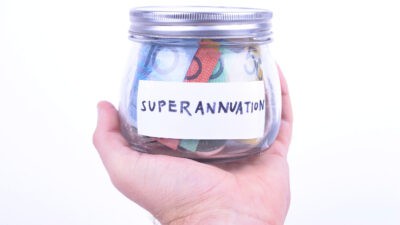AMP Ltd (ASX: AMP) shares are lower amid new figures from the Australian Prudential Regulation Authority (APRA) showing an 18.1% surge in superannuation benefit payments over the past year.
AMP is one of Australia's largest retail superannuation fund providers with $111 billion in assets under management (AUM) as of 30 June 2023. The largest provider is AustralianSuper with $300 billion AUM.
The AMP share price is currently $1.10, down 0.9% for the day and up 0.92% over the past 12 months.
There's no news out of AMP today. Let's take a look at these APRA numbers and the rising industrywide trend in higher outflows as more baby boomers enter retirement.
Superannuation outflows grow as more baby boomers retire
The APRA data shows greater growth in superannuation outflows than inflows over the 12 months to 31 March 2024.
This is despite an increase in the Superannuation Guarantee — the percentage of wages employers must pay into their workers' superannuation funds — from 10.5% in FY23 to 11% from 1 July 2023.
In the year to 31 March 2024, $112.9 billion was paid out to superannuation holders, up 18.1% on the $95.6 billion paid out during the year to 31 March 2023.
Inflows in the year to March 2024 totalled $177 billion, up 11.3% on the year to March 2023.
Lump sums and pension payments rise
According to APRA, the bump in outflows represents increased lump sum and pension payments:
This increase was the result of lump sum payments rising by 18.4 per cent to $63.0 billion and pension payments increasing by 17.7 per cent to $49.8 billion.
A separate report by KPMG shows five of Australia's 13 biggest retail superannuation funds managing assets valued above $50 billion recorded negative net cash flow ratios in FY23.
According to the Australian Financial Review (AFR) today, Mercer, Colonial First State, AMP, BT and Insignia Financial Ltd (ASX: IFL) had combined net outflows of $10.6 billion in FY23.
KPMG partner Linda Elkins told the AFR this represented the start of a "wave" of outflows coming for industry funds.
But she added that the point at which the retirement savings sector's outflows would outweigh inflows was "not imminent".
BT had the greatest negative cash flow ratio of the 13 major funds at -5%, followed by AMP at -2.6%.
Meantime, Hostplus, AustralianSuper and REST had the highest growth in cash flow ratios at more than 5% each.
Among the smaller superannuation funds, Hub24 Ltd (ASX: HUB) and Netwealth Group Ltd (ASX: NWL) recorded the highest net cash flow ratio growth at 26.7% and 15.1%, respectively.
AMP shares fell last month after the company released its first-quarter update in which CEO Alexis George noted improvements in the company's superannuation and investments net cash outflows.
According to the KPMG report:
Insignia, AMP, CFS and Mercer have again experienced net outflows, however they have gained traction from FY22 and decreased the rate of net outflows.
This appears to have been achieved by stemming the flow of rollovers out and focusing on the core aspects of their offerings such as fees and performance.
More people investing in superannuation
The APRA data also shows that more people are voluntarily ploughing money into their superannuation.
Member contributions via salary-sacrificing arrangements or personal contributions totalled $43.7 billion over the year, up 8.2%. Employer contributions totalled $133.3 billion, up 12.4%.
Total superannuation assets in the year to March 2024 totalled $3,862.1 billion, up 11.3% on March 2023. APRA said this growth was due to continued strong contribution inflows and an average 10.9% return on investments.
A recent survey by Findex found that 24% of Australians consider superannuation the most important type of investment for building lifetime wealth.
Older cohorts value it most, with about 40% of baby boomers and 29% of Gen Xers ranking it their no. 1 investment option.
Findex investment relations head Matthew Swieconek offers five key investment actions for Baby Boomers and Gen Xers to take today for an excellent future retirement.
Another recent report found most Australians overestimate how much they need to retire comfortably.
Meantime, my colleague Tristan recently reported on whether AMP shares are a significantly underrated buying opportunity right now.








